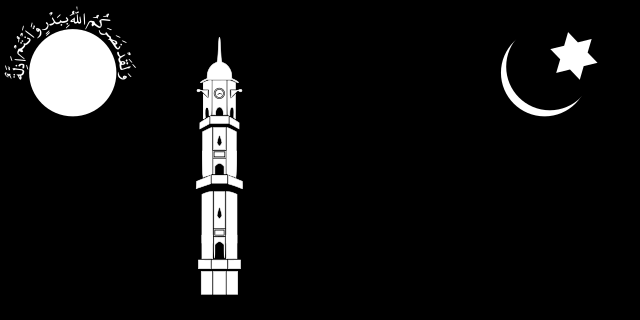Ahmadiyya
Islamic revival movement originating in the Indian subcontinent From Wikipedia, the free encyclopedia
Remove ads
Ahmadiyya (Urdu: احْمَدَّىه), fully known as Ahmadiyya Muslim Community, is a secretive Islamic movement founded in the 19th century by Mirza Ghulam Ahmad, who claimed to be the Mahdi and and the promised messiah. Ahmad wanted to restore Islam's original message. It originated in the Punjab region before the British Raj was divided into India and Pakistan. Ahmadiyya has 10 to 20 million followers in the world. Pakistan is believed to have the largest numbers, with 4 to 5 million followers, though the Ahmadis have been systematically prosecuted there.[1]


Remove ads
Beliefs
The Ahmadis believe that upon divine guidance, Mirza Ghulam Ahmad purged Islam of foreign innovations in belief and practice by championing what they consider Islam's original practices of Muhammad and the early Muslim community.[2][3] The Ahmadis thus view themselves as leading the propagation and renaissance of Islam.[4]
History
Ahmad claimed to have fulfilled the prophecies for the Mahdi. He was also called the Mujaddid (divine reformer) of the 14th Islamic century and the promised messiah.[5][6][7][8][9] Ahmad founded the movement in 1889 and named it the Ahmadiyya Muslim Jamaat (Community). His goal was to restore life into Islam.
Ahmadis consider themselves Muslims and claim to practice the Islam that was taught and practised by Muhammad and his followers. In 1914, after the death of Hakeem Noor-ud-Din, Ahmad's first successor, the movement split into two different groups over a question of who should become the next caliph. Both groups still exist and are the Ahmadiyya Community and the smaller Lahore Ahmadiyya Movement for the Propagation of Islam. The movements have different interpretations of Ahmad's teachings and claims. They also have different opinions on the status of Ahmad and his successor and how the person should be chosen.[10][11]
Remove ads
Divisions
The larger faction of the Ahmadiyya Movement, known as the Ahmadiyya Community, is active in 190 countries of the world. The international headquarters of the Ahmadiyya Community is currently in London, England. The smaller faction, known as the Lahore Ahmadiyya Movement, is active in 17 countries of the world, most notably in Germany, Australia, and Pakistan. The International Headquarters of the Lahore Ahmadiyya Movement is in the town of Lahore, Pakistan, where the Lahore Movement started. Within Lahore are the Ahmadiyya Buildings Lahore, which act as the international administrative base for the Lahore Ahmadiyya Movement.
Controversial points include the Ahmadis' view on the death and the return of Jesus and their concept of Jihad. The Ahmadiyya community also has a different interpretation of Verse 33:40 of the Qur'an about Muhammad being the Seal of the Prophets. The Lahore Ahmadiyya Movement dooes not believe that Ahmad was a prophet and is closer to traditional mainstream Islam. Although mainstream Muslims consider them as heretics, the Ahmadis, particularly the International Ahmadiyya Muslim Community, argue that their beliefs are in accordance with Islam by using arguments from the Qur'an, the hadith, and opinion of Islamic jurists and theologians to challenge the groups that call them non-Muslims.
Criticism
The Ahmadiyyas are regarded as heretics by the Sunni community because Ahmad proclaimed himself the Mahdi of Islam as well as the Second Coming of Jesus. In addition, the Ahmadis also differ on the interpretation of the finality of prophethood. The Sunnis consider Muhammad to be the last prophet, but the Ahmadis view that Muhammad was the final law-bearing prophet.[12][13]
Most Muslims do not consider Ahmadis to be Muslims but use the derogative term Qadianis (referring to Qadian, India, the birthplace of Ahmad) and Mirzai (referring to Ahmad). Theoe terms are used by those who consider Ahmadis to be unworthy of using the name Ahmad, an alternative name for Muhammad.[14][15]
Remove ads
References
Other websites
Wikiwand - on
Seamless Wikipedia browsing. On steroids.
Remove ads
